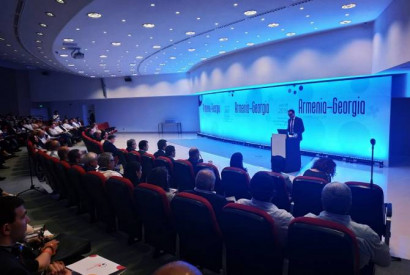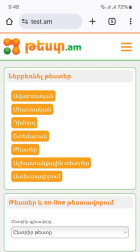Armenian-Georgian Energy Dialogue: What Are the Chances for Success?
 Official relations between Armenia and Georgia are full of contradictions, that negatively affects the development of economic cooperation. Choosing the Euro-Atlantic development path, Tbilisi sacrifices participation in Eurasian projects. Proceeding from geopolitical realities, the bilateral dialogue in the energy sector is demonstrating uneasy trends. The chances of achieving success on the Armenian-Georgian energy agenda are slim. When assessing the potential for developing a partnership in the field of gas transportation communications, one should recall the agreement signed in 2015 between Yerevan, Tbilisi and Tehran on swap supplies of Iranian gas to the Georgian market (due to the lack of the possibility of direct access of the Iran-Armenia gas pipeline to the Georgian gas transportation system) . The Energo-Impex company was founded under the Armenian government to ensure the implementation of the deal. As a result, a trial delivery of natural gas with a volume of about 24 million cubic meters was carried out in the direction of Georgia. m. Subsequently, this form of trilateral cooperation was not further developed due to two key reasons. Firstly, a certain skepticism regarding the concluded deal was initially inspired by the leading positions of the Azerbaijani company SOCAR in the Georgian gas market. Secondly, the deepening of cooperation with Iran in the energy sector did not fit into the geopolitical guidelines of Georgia, which took a course towards European integration and received financial support directly from Washington. Thus, the attempt to break through the energy transportation blockade, which Armenia was in after the collapse of the USSR, was not crowned with success. With a surplus of generating capacities, Armenia has traditionally been viewed as the region's electricity leader. Until 2005-2006 Armenia supplied up to 15% of electricity consumed in Georgia. The deliveries were made through the Alaverdy power transmission line operated by the Russian company Inter RAO UES. At first, the energy reform initiated in Georgia led to the fact that exports from Armenia to Georgia were carried out mainly during accidents in the Georgian energy system, while Tbilisi, as a rule, returned the same amount of imported electricity to Yerevan. However, today there is a situation when Armenia not only does not supply electricity to the Georgian market, but begins to import cheap electricity produced in Georgia. In 2018, electricity imports from Armenia to Georgia amounted to 82.3 million kWh, exports - 7.8 million kWh. In 2019, imports amounted to 59.3 million kWh, exports - 0 kWh. It is noteworthy that in parallel, the share of electricity imported from Azerbaijan is growing on the Georgian market. So, according to the results of 2019, the import of electricity from Azerbaijan to Georgia exceeded 1 billion kWh. Thus, today Azerbaijan is the leader among the main exporters of electricity in the Georgian market (followed by Russia and Turkey), which is an important geo-economic challenge for the energy surplus Armenia. The process of liberalization of the Armenian electricity market initiated in 2017, which also provides for the liberalization of foreign trade activities in this area, greatly facilitates the establishment of electricity imports from Georgia to Armenia. Obviously, the high cost of electricity produced in Armenia creates conditions in which cheaper Georgian electricity generation will be much more attractive for Armenian electricity traders - an institution that is also envisaged by the liberalization program. There are also infrastructure problems in the liberalization of electricity exports and imports. When delivering electricity from Georgia, Armenia must turn off the power supply in the regions of Tavush or Lori, since now there is no possibility to work in parallel. This regime can be activated in 2023-2024, when the construction of the Iran-Armenia and Armenia-Georgia power transmission lines within the North-South electricity corridor (Iran-Armenia-Georgia-Russia) is completed. |













